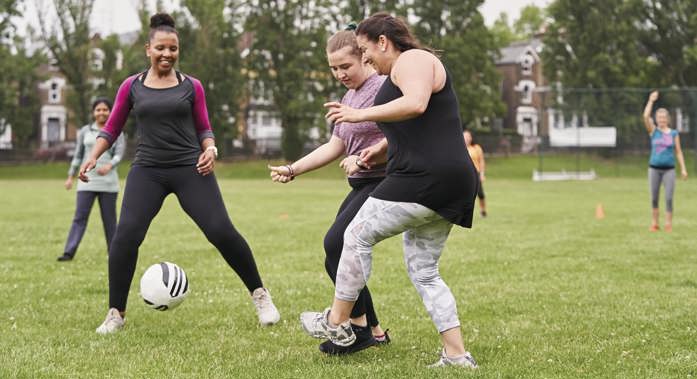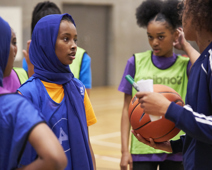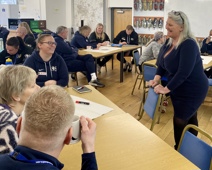We caught up with Simon Kirkland, CIMSPA Chartered Fellow, to continue our 'Retirement Perspective: From the Outside Looking In' series to understand his thoughts on what sport development actually means. Simon concluded...
When digging through past definitions of Sport Development, I came across this:
Sport Development is concerned with the creation and management of a system that seeks to optimise participation in sport and the movement of athletes both vertically and horizontally through the Sports system.
Reflecting on this definition and thinking through my career, which has seen the growth in Sport Development as an element of a new industry of Sport and Physical Activity, I wondered if the sector all agreed on this definition and had discussed what it means. The vertical pathway for me is the talent pathway within an NGB, and the Horizontal pathway is for sport for life. I think maybe people work in the void between the two.
As originally a PE teacher, then an early Sport Development Officer working for a local authority in areas of high deprivation and then leading a governing body, I have seen both sides of the vertical and horizontal pathways of Sport development. Most recently, the term “sport for development” has emerged. Is this not another term for the horizontal pathway?
For me, sports development started with Action Sport in the 1980’s which saw workers out with bags of balls mainly employed through local authorities. This was very much the horizontal pathway of getting and keeping people playing sport. Just as we have now through “unite the Movement”, however, the challenge is vast, and interventions can not affect every community. The targeting of investment must be, in my opinion, at those who are less able to take action themselves.
For me, this is something that continuously needs investment and will rarely become sustainable without a mixture of volunteers and funds to support participants. I was asked recently by an NGB Head of development, “You must make your EDI projects sustainable?”. They never will unless poverty and discrimination are eradicated, in my opinion. At the same time as Action Sport talent pathways were almost exclusively through School Sport Associations. The Teacher action of the mid-80s, the creation of targets for schools through the National Curriculum, fundamentally changed the involvement of teachers and school sport associations in who are now on their knees. NGBs and their clubs have filled the void; however have the knowledge and understanding of child development that teachers have? The exception of the independent school sector, which is, in many cases, thriving.
With the move to a more project-templated delivery of sport development through programmes such as Champion Coaching, Active Sports, Sportivate, and Satellite club programmes, Sport Development officers (with a range of titles) have become project managers with no need for innovation or bespoke to the needs of different communities. The unintended consequences of this national approach, which at the time gave structure to delivery outside and integrated with schools, have been the skills of Sport development people to work with other people to deliver. The dependency on Sport England for everything is now a cultural norm.
The reduction in local authority investment in sport developments is stark, no more so than in my City, Birmingham. Just before the turn of the century, we had nearly 30 people in the Birmingham Sport development team. That same team can be counted on the fingers of one hand. The same levels of funding have now moved into NGBs or Active Partnerships, but is the eco-system stronger now than before? Sport Birmingham has the same number of people now, but are they project managing Sport England projects or delivering for the people of Birmingham from a bottom-up approach?
For sure, it seeks to deliver more outside of what was funded through schoolteacher commitments and local authorities, so it's maybe different rather than better or worse.
The need for effective planning and delivery in both the vertical and horizontal pathways, along with the right people coaching, instructing, and teaching, is the mix that needs the most attention.
In my previous blog, I discussed whether coaches for the system are failing. The same goes for Sport development. We have an exceptionally bright, well-educated workforce in our system partners. But are they educated in the right thing?
Most have degrees, but the vast majority have no educational background or knowledge of what sport development is. Sport Science degrees are the standard for our sector, but what is the relevance of science when seeking to understand and plan with a community that is disengaged from sport and physical activity? In many cases, those seeking to address inequalities may not have had the lived experiences or professional/volunteer experiences to take a relevant and empathetic approach.
So what?
I'm never one to not try and seek an educational solution; we developed with the Leadership Skills Foundation the Level 3 in Sport for Development. The course is seeking to build knowledge and applied skills to take intelligent people and work with communities in the Horizontal pathway of getting people active for life through habitual change.
In working with my colleague Jobeth Hamilton, who is not only a great Sport development thought-leader but has, through her work and volunteering, made a difference to people’s lives. We developed the qualification to marry with the Apprenticeship standard, which, in my view, should be called Sport development, but is the Level 3 Community Health and Sport Officer, so that those embarking on sport development can gain knowledge and skills to apply to their work.
However, it's not the professional workforce alone that will make the difference. The major difference, and for me, the most important philosophy in Sport development is to develop the people who will carry this on in their community. So who are the local leaders who can organise and motivate people to develop their communities themselves? Too many professionals get involved, and then when they move on to another job, the activity dies. The empowerment and support to local people in a facilitative capacity builds community capacity and has long long-lasting impact.
To understand Sport development is not easy, and the assumption of many it's just about the performance pathway and an exit along the way. This can be the same for coaches. However, if we are to meet the aspirations of the definition above, we must learn how to develop people through empowerment and leave a lasting community infrastructure behind.
What are your key takeaways or thoughts on what Sport development actually is? Let us know in the comments; we'd love to know your thoughts.







